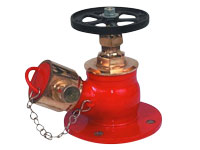Kampong Thom Province Launches Pilot Project to Enhance Street Food Hygiene
In a significant move to improve public health and bolster tourism, the Ministry of Industry, Science, Technology, and Innovation, in collaboration with the Kampong Thom Provincial Authorities, has officially launched a pilot project aimed at elevating street food hygiene standards. The launch ceremony took place on May 24, 2025, and was presided over by HE […]
Government Moves Forward with Land Registration in Tonle Sap Lake Region
In a significant step towards sustainable land management, the Cambodian government convened a joint meeting with key stakeholders to discuss the registration of land in Zone 3 of the flooded forest surrounding Tonle Sap Lake as state property. This initiative involves the Ministry of Land Management, Urban Planning and Construction, the Ministry of Water Resources […]
Chinese Investors Eye Opportunities in Cambodia’s Booming Economy
In a significant move to strengthen economic ties, approximately 40 Chinese companies convened with representatives from the Cambodian Chamber of Commerce to explore promising investment opportunities across various sectors in Cambodia. The meeting was spearheaded by Oknha Banthi Vinh Hour, Vice President of the Cambodian Chamber of Commerce, and Ji Lin, President of the China […]
Ministry of Environment and STEM Cambodia Launch Innovative Tree Growth Tracking App
In a significant step towards fostering environmental stewardship among the youth, the Ministry of Environment has announced a collaboration with STEM Cambodia to develop the CHAKRA STEM App, an innovative tool designed to monitor tree growth and enhance awareness of ecological conservation. The memorandum of understanding was formalized during a ceremony attended by His Excellency […]
China Fosters Investment Relations with Cambodia Through New Business Association
In a significant move to enhance economic ties, a consortium of Chinese investors has officially launched the Hubei Province Business Association in Cambodia. This initiative aims to attract more Chinese investments and foster collaboration between the two nations. During the launch event, His Excellency Chea Wutthy, Secretary-General of the Cambodia Investment Committee under the Council […]
Apsara Authority Reopens Historic Building to Enhance Angkor Tourism and Research
In a significant development for tourism and heritage conservation, the Apsara Authority has announced the reopening of an ancient building, over a century old, located near the Bayon Temple. This historic structure will now serve as a center for research and education in Angkor’s conservation efforts. His Excellency Long Kosal, Deputy Director General of the […]



 ខ្មែរ
ខ្មែរ







